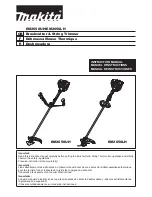
1
Introduction
Overview
2
Surveyor MSQ Plus Hardware Manual
Thermo Scientific
Overview
In a typical LC/MS analysis, an analytical pump pushes solvent through an LC column under
high pressure. An autosampler introduces a measured quantity of sample into this solvent
stream. As the solvent stream passes through the LC column, the sample separates into its
chemical components. The rate at which the components of the sample elute from the
column depends on their relative affinities to the liquid mobile phase solvent and the solid
particles that make up the column packing. As the separated chemical components exit the
LC column they pass through a transfer line and enter the Surveyor MSQ Plus MS detector.
The Surveyor MSQ Plus MS detector consists of an atmospheric pressure ionization
(API)
source, a transfer lens, a mass analyzer, and an ion detection system. A vacuum manifold
encloses part of the API source, the M-path, the transfer lens, the mass analyzer, and the ion
detection system.
MS detectors can detect only ionized molecules. The Surveyor MSQ Plus MS detector
provides two ionization techniques: atmospheric pressure chemical ionization (APCI) and
electrospray ionization (ESI). In the ESI mode, molecules ionize in the liquid phase before
they enter the ion source. In the APCI mode, molecules ionize in the gaseous phase as they
enter the API source. For both ionization techniques, the MS detector can place either a
positive or negative charge on the capillary of the API probe at any point in time. During a
chromatographic run, the MS detector can switch the charge applied to the capillary. By
repelling ions of like charge towards the entrance of the MS detector, the charged capillary
acts as a charge filter.
The vacuum produced by the forepump draws both neutral molecules and ionized molecules
through the entrance cone into the M-path region of the MS detector. The charge on the
ionized molecules depends on the selected ion polarity mode. In the M-path region, the low
vacuum of 1 Torr produced by the forepump draws the neutral molecules out of the MS
detector, enriching the ion stream. By the time the ion stream reaches the exit cone, the
solvent flow has decreased by three orders of magnitude. The charge on the exit cone focuses
and propels the ionized molecules into the intermediate vacuum region of the MS detector.
As the ionized molecules pass through the exit cone, the transfer lens focuses them into a fine
particle stream and transmits them to the mass analyzer. The mass analyzer transmits ions of a
selected mass-to-charge ratio to the ion detection system, where they produce a signal. The
system electronics amplify the signal, which is then transmitted through a USB connection to
the Surveyor MSQ Plus data system.
Ion Polarity Modes
You can operate the Surveyor MSQ Plus MS detector in the following ion polarity modes:
positive, negative, or positive-negative switching. The MS detector controls the ion polarity
by placing either a positive or negative charge on the capillary of the API probe.
















































